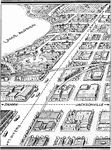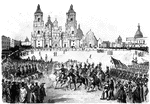
Quaker City
"The Quaker City, one of the Potomac Flotilla, engaging Confederate dragoons in Lynn Haven…

Castle Garden
"Reception of Brigadier General Corcoran by Mayor Opdyke and the citizens of New York, at Castle Garden,…

Battle of Baker's Creek
"Battle of Baker's Creek, May 16th, 1862- Defeat of the Confederates under Pemberton, by General Grant.…
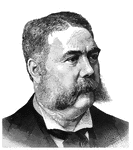
General Chester A. Arthur
"General Arthur, twenty-first President of the United States, born in Fairfield, Franklin County, Vt.,…
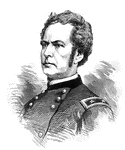
General Joseph Hooker
"General Hooker, born in Hadley, Mass., November 13th, 1814, died in Garden City, N. Y., October 31st,…
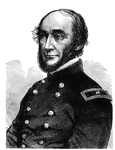
General George W. Cullum
"General Cullum, born in New York city, February 25th, 1809, died in New York city, February 28th, 1892,…

Siege of Vicksburg
"Siege of Vicksburg- the fight in the crater of Fort Hill after the explosion, June 27th, 1863. Our…
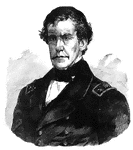
Rear Admiral Charles Wilkes
"Rear Admiral Wilkes, born in New York city, April 3rd, 1798, died in Washington, D. C., February 8th,…

Battle of Blue Ridge Pass
"Battle of Blue Ridge Pass, Sunday, September 14th, 1862- the first Federal victory in Maryland. On…
Fort Vulcan
"Fort Vulcan, Jones's Island, Savannah River, Ga.- one of the Federal batteries cutting off communication…

Attack on Confederate Works
"Siege of Vicksburg, attack on the Confederate Works, May 22nd, 1863. Our sketch represents the terrible…

Confederate Batteries
"Fredericksburg, Va., and the Confederate batteries and pickets, as seen from Falmouth Heights, headquarters…
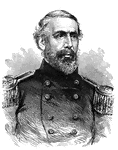
General J. H. Hobart Ward
"General Ward, born in New York city, June 17th, 1823, was educated at Trinity Collegiate School; enlisted…

Wounded Federals
"Towing the wounded Federal soldiers down the bayou on a raft, on the night of January 14th, 1863, after…

locomotives
"Five locomotives built at Vicksburg, Miss., by the Federal soldiers, under the superintendence of Colonel…

General Rufus King
"General King, born in New York city, January 26th, 1814, died there, October 13th, 1876, was graduated…

General Daniel Tyler
"General Tyler, born in Brooklyn, Windham County, Conn., January 7th, 1797, died in New York city, November…
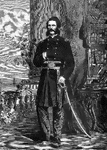
General Lafayette C. Baker
"General Baker, Chief of the United States Secret Service, born in Stafford, Genesee County, N. Y.,…
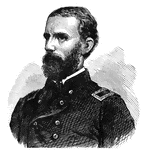
General Cuvier Grover
"General Grover, born in Bethel, Me., July 24th, 1829, died in Atlantic City, N. J., June 6th, 1885,…
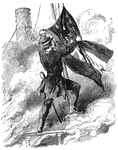
Capturing the Confederate Flag
"Lieutenant J. H. Raymond capturing the Confederate flag from the burning Confederate steamer Fanny,…
Burnside's Corps
"The war in Virginia. Burnside's corps charging the Confederate position on the right of the enemy's…

Horseshoeing
"Horseshoeing in the army. Not like the country blacksmith, by the highroad upon the skirt of the village,…
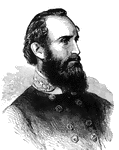
General Thomas J. Jackson
"General Stonewall Jackson, born in Clarkesburg, W. Va., January 21st, 1824, died at Chancellorsville,…
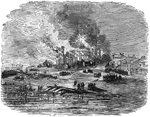
Burning of Baton Rouge
"Banks's Expedition- burning of the state capitol of Louisiana, Baton Rouge, Tuesday night, December…

Invasion of Pennsylvania
"The invasion of Pennsylvania- working on the fortifications near Harrisburg, Pa., June 16th, 1863.…

Fort Stevens
"The operations near Washington, scene of the fight in front of Fort Stevens, July 12th-13th, 1864.…

Roemer's Battery
"The war in Virginia- Roemer's Battery, Third Division, Ninth Army Corps, shelling Petersburg. Our readers…
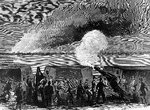
Siege of Charleston
"Siege of Charleston- the doomed city fired by Gillmore's explosive shells from Fort Putnam, January…
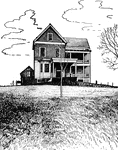
City House
A city house in the country. A low house would be better suited to sitting alone on a hill.

Battle of New Berne
"The battle of Newberne- final and successful charge of the Federal troops under General Burnside, on…
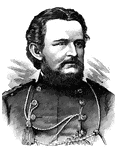
General Wesley Merritt
"General Merritt, born in New York city June 16th, 1836. He was graduated at the United States Military…

Lieutenant General William Tecumseh Sherman
"General Sherman, born in Lancaster, Ohio, February 8th, 1820; died in New York city, February 14th,…

Billy Wilson Zouaves
"The ('Billy') Wilson Zouaves, at Tammany Hall, taking the oath of fidelity to the flag, April 24th,…

Funeral Cortege
"The funeral cortege, at boston, Mass., of the Sixth Massachusetts soldiers killed at Baltimore. The…

Major Zagonyi
"Second charge upon the Confederates by General Fremont's bodyguard, under Major Zagonyi, near Springfield,…
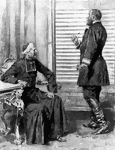
Maximilian
"Maximilian watching the departure of the last French troops from the City of Mexico."—E. Benjamin…

KKK Scene
"A prospective scene in the city of Oaks, 4th of March, 1869. The above represents the fate in store…
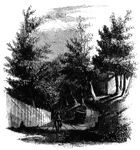
Wolfe's Ravine
Wolfe's Ravine. This scene is about half way up the ravine from Wolfe's Cove, looking down the road,…
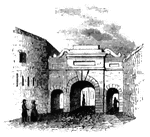
Palace Gate
Palace Gate, outside. This is one of the most beautiful gates of the city, and opens toward the St.…

Caughnawaga Church
Caughnawaga church. This old church, now (1848) known as the Fonda Academy, under the management…

Little Falls
View at Little Falls. This view was taken from the rail-road near the village, looking down the river.…
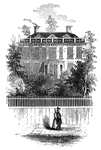
Schuyler's Mansion
Schuyler's Mansion. This view is from Schuyler Street. The edifice is of brick, having a closed octagonal…
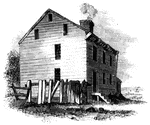
Tavern at Elizabethport
Old Tavern at Elizabethport. This view is looking eastward. In the distance, on the right, is seen a…

Savin's Rock
Savin's Rock. This is a view of the spot where Farth landed, in Orange, formerly West Haven. It is between…

Campbell's Monument
Campbell's Monument. This rude memorial was erected in 1831, by J. W. Barber, Esq., of New Haven, the…
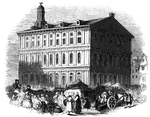
Faneuil Hall
"Faneuil Hall has been denominated 'the cradle of American liberty,' having been the popular gathering-place…

Floating Battery
"American Floating Battery. I am indebted to the kindness of Peter Force, Esq., of Washington city (editor…

Tonomy Hill
"Top of Tonomy Hill. This view is from the northside of the hill, looking south. The wall appearance…
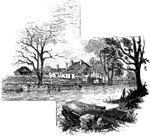
Greene and Knox Head-Quarters
"Head-quarters of Greene and Knox. This view is from the turnpike road, looking southeast. The water…
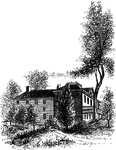
Livingston Mansion
"The Livingston Mansion. This is a view from the lawn on the north side. It is embowerd in trees and…
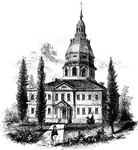
Annapolis State House
"The State House in Annapolis. This fine building is situated upon an elevation in the center of the…
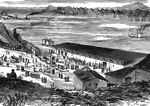
Jefferson City Railroad Depot
"Jefferson City, capital of Missouri. The arrival of General Fremont's division, September 26th, 1861.…

Jefferson City Capitol Building
"Jefferson City, capital of Missouri. The arrival of General Fremont's division, September 26th, 1861.…

Bellaire
"Bellaire, O.- Steamboats conveying troops and munitions of war for the Federal forces on the Great…

Bellaire
"Bellaire, O.- Steamboats conveying troops and munitions of war for the Federal forces on the Great…

